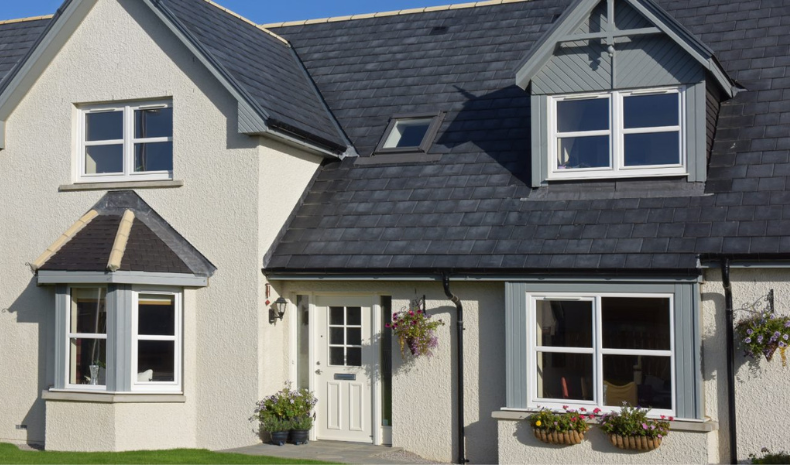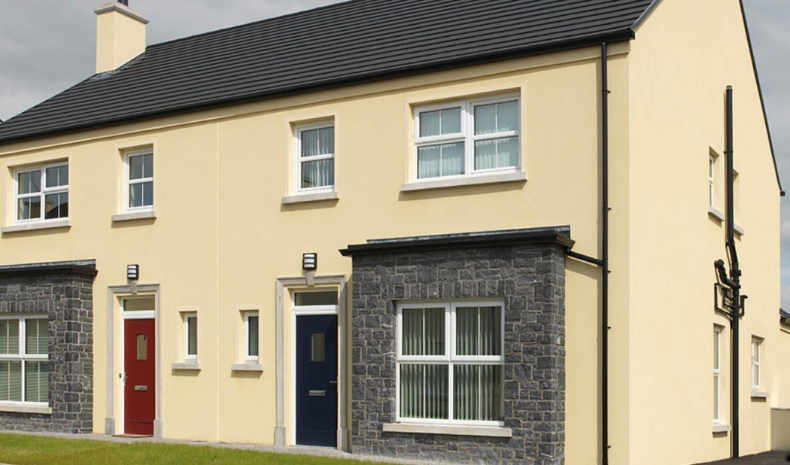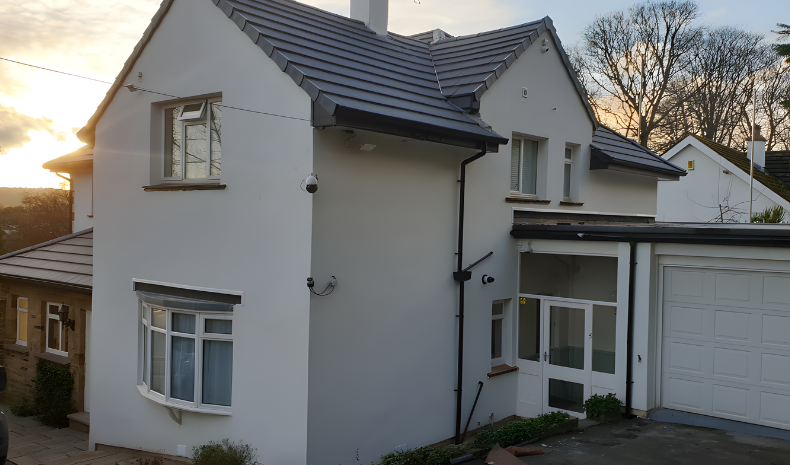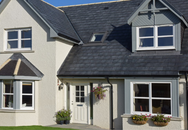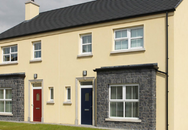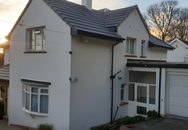- 8.30 AM - 6 PM
- +44 113 322 3363
- 07980 973675
Textured Coatings
Welcome to Yorkshire External Insulation
Your trusted provider of a wide variety of textured coating systems designed to transform the appearance of your property while covering any imperfections on the surface. Our range of textures and colors are sure to meet your specific requirements and preferences.
Benefits
The benefits of textured wall coating systems are numerous. In addition to the improved appearance and weather resistance, our coatings also offer a range of texture grades to choose from. The more heavily textured the coating, the better it is at hiding surface imperfections. Our coatings are available in a wide range of colors, ensuring that you can find the perfect match for your property.
- Durable and long-lasting protection against the elements
- Enhanced aesthetic appeal
- Breathable coatings that prevent moisture buildup and reduce the likelihood of mold and mildew growth
- A range of texture grades to choose from
- A wide range of colors to ensure the perfect match for your property
At Yorkshire External Insulation, we understand that many rendered properties have been repaired over the years, leading to the accumulation of repair marks and different textures. Our textured coating systems are applied much thicker than traditional masonry paints, with the added texture helping to cover and hide these imperfections. This makes our coatings a more cost-effective solution than completely removing and re-rendering a surface, which is an expensive and time-consuming process.
Our textured coating systems can be installed without the need for scaffolding in most cases, making the installation process quicker and more affordable. Our coatings can be installed on a variety of exterior surfaces, including cement render, pebbledash, roughcast, tyrolean, spar dash, brick, and previously painted surfaces.
Contact Yorkshire External Insulation today to learn more about our services and how we can help transform the appearance of your property.
Protection from the elements
One of the primary benefits of house rendering is that it provides a layer of protection for your home's exterior walls. This protection shields the walls from the damaging effects of the sun, wind, and rain, which can cause cracking, erosion, and other types of damage. By applying a layer of rendering, you can help to extend the lifespan of your home and prevent costly repairs.
Improved energy efficiency
House rendering can also help to increase the energy efficiency of your home. The layer of rendering material acts as an additional insulating layer, helping to keep your home warmer in the winter and cooler in the summer. This increased insulation can lead to significant energy savings, as your home's heating and cooling systems won't have to work as hard to maintain a comfortable temperature.
Enhanced curb appeal
Finally, house rendering can significantly improve the aesthetic appeal of your home. The rendering material can come in a variety of colors and textures, allowing you to choose a finish that complements your home's architectural style and surrounding landscape. A well-rendered home can increase its curb appeal, making it more attractive to potential buyers and enhancing its overall value.
Types of Render
When looking to render a building, there are various options available, each with specific visual or structural benefits, and some clear pros and cons:
Cement Render
This is the standard option for rendering a house, which involves mixing sand and cement with water to create the finish. It can be naturally grey or dyed during the mixing process to create a colored render. However, it has some issues such as cracking over time and needing to be repainted. It also prevents water evaporation, which can cause problems if the render cracks and water gets behind it.
Lime Rendering
Adding hydrated lime to a cement render can bring a range of benefits to usability and performance, although it makes the mix more expensive. Lime render is easier to apply with a trowel, less likely to crack once dried, and better allows moisture to dissipate, which contributes to superior durability.
Pebbledash Rendering
This is a type of rendering used traditionally on UK homes, which involves throwing aggregates at a freshly rendered surface to create an uneven texture that can be left as-is or painted over. While this look was hugely popular when first used, it has lowered in popularity over the years and is rarely used now.
Acrylic Render
Acrylic render has acrylic resins added during mixing, which brings structural benefits by reducing the chances of cracking. Acrylic renders can also come in a range of colors, but they lack breathability.
Silicone Render
Silicone render is a cement-based render with silicone added, which offers similar benefits to acrylic render without sacrificing breathability. It is an expensive solution, and can only be installed during the summer as it requires higher temperatures to adequately dry.
Cork Render
This is a more recent innovation, involving cork for a textured finish. Cork render possesses thermal and acoustic insulation properties, alongside flexibility to avoid cracking, and water resistance. It is also an environmentally friendly option, as cork is removed from trees that will naturally grow more, meaning that they do not need to be harvested. Cork render can be installed with a range of colored finishes.
Rendering Different Building Types
The best rendering option will depend on the material the building is made from, as well as the look of any surrounding buildings. An expert assessment of the outer walls should be carried out before beginning work on an existing home. For instance, brick or block homes can be rendered over with a wide range of options, but homes with timber cladding should avoid options that are not breathable, as this could contribute to mold growth.
It's also worth considering how the render will work with neighboring houses, especially in terraced or semi-detached houses. If you are looking to install external insulation, the size of your house will be increased due to the insulation boards. If you render a house bordered by brick homes it can stand out. In some cases, planning permission may be required to render a house, and in listed properties or conservation areas, you may be restricted when it comes to rendering and the colors you can use.
What is a U Value and Why is it so Important?
The thermal performance of a building is measured in terms of heat loss and is commonly referred to as a U-value (thermal transmittance), or an R-value. U-values (measured in units of W/m²K) determine how effective a material is as an insulator. The lower the U-value, the better it is at preventing heat loss. High U-value materials such as stone, brick, concrete and metal are cold to the touch because they remove the heat from your hand more effectively, so you experience ‘heat loss’. Conversely, low U-value materials such as foam, polystyrene and wool are warmer to the touch because they prevent the heat from your hand, which makes them great insulators.
How Much Does it Cost?
An average three-bedroom semi is likely to cost anything between £5,000-9,000, with a larger detached home in the region of £8,000-15,000.
How Much Can I Save On My Heating Bills?
Installing EWI can reduce your energy bills quite considerably. For instance, if you install insulation with a U-value of 0.31W/m², it can typically reduce your heating energy bills by as much as 50%. As energy prices continue to rise, year on year savings will continue to get bigger too.
Reduce Your Carbon Footprint
The government's plans to reduce the carbon footprint of every UK home means that homeowners will eventually have to make changes to their properties very soon, so it makes sense to do it now whilst there's no VAT to pay and the material prices are still relatively low. As time goes by and the demand grows, you can imagine the prices may increase also.
FAQ's
How long does it take to fit exterior wall insulation?
Anything from 4-7 days depending on the size of the property and as long as there are no problems or bad weather conditions.
How thick is it?
Thicknesses vary from 30mm to 125mm. The thicker it is, the better the insulation.
Is there a guarantee with it?
Yes, we offer a 10 year guarantee on all work done.
Do I need planning permission?
In most cases planning permission is not required but if you want to be certain, do check with your local authority to make sure. For listed buildings and homes in Conservation Areas it is doubtful that consent may be given.
What type of material is used for External Wall Insulation?
The material we use is EPS (Expanded Polystyrene) which offers the best price/performance ratio compared to any other insulation material and is quick and easy to install and offers a great finish.
*Savings may vary depending on the type and thickness of insulation used, as well as the current energy efficiency of your home. Contact us for a personalized quote.
CLIENTS SAY
We're proud to share what our clients have to say about us..
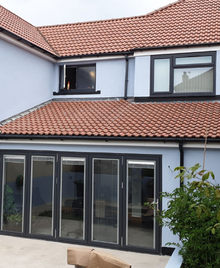
The team was professional, efficient and always on time. The insulation and rendering was done to a very high standard and has made a significant difference to the energy efficiency of my home.
Nikita Copley
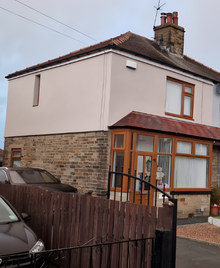
Its the best thing we've done as the upstairs now is nice and warm and we don't have to turn the heating on or keep it on for long.
Gary & Sue
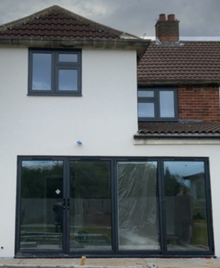
Kept in regular contact with regards to dates and turned up as promised, doing a great job. We are now saving to do the rest of the house and I would definately recommend Matt.
Lee Griffith
REQUEST A QUOTE
For any enquiries or to request a quotation for your next project, feel free to get in touch with the form below. Or give us a call on +44 113 322 3363.

